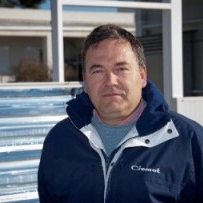Solar Chemistry and Photocatalysis: Environmental Applications
A special issue of Catalysts (ISSN 2073-4344). This special issue belongs to the section "Photocatalysis".
Deadline for manuscript submissions: closed (30 September 2022) | Viewed by 8695
Special Issue Editors
Interests: heterogeneous photocatalysis; water treatments; study of the fate ofcontaminants of emerging concern; soil pollution
Interests: heterogeneous and homogeneous (photo-Fenton) photocatalysis; solar photoreactors; solar disinfection; photocatalysts evaluation; wastewater treatment; microcontaminants elimination; photofuels production by photocatalysis
Special Issues, Collections and Topics in MDPI journals
Special Issue Information
Dear Colleagues,
This Special Issue comprises selected papers from the Proceedings of the 11th European Conference on Solar Chemistry and Photocatalysis: Environmental Applications (SPEA11) that will be held from 6 to 10 June 2022 in Turin, Italy.
The European Conference on Solar Chemistry and Photocatalysis: Environmental Applications (SPEA), started in 2000, reports the advances and future challenges in the field of photocatalysis, solar photochemistry, and environment-related applications.
The SPEA11 edition will cover research fields as varied as the following:
- Process fundamentals, modeling, and mechanistic studies;
- New materials and hybrid systems for photocatalysis and solar light utilization;
- Environmental photochemistry and photocatalysis;
- Green synthesis, H2production, and CO2 utilization by solar photochemistry and photocatalysis;
- Air treatment;
- Water treatment and disinfection;
- Photo(catalytic) reactors, theory, and applications;
- Standardization and commercial applications.
Prof. Dr. Sixto Malato
Guest Editor
Manuscript Submission Information
Manuscripts should be submitted online at www.mdpi.com by registering and logging in to this website. Once you are registered, click here to go to the submission form. Manuscripts can be submitted until the deadline. All submissions that pass pre-check are peer-reviewed. Accepted papers will be published continuously in the journal (as soon as accepted) and will be listed together on the special issue website. Research articles, review articles as well as short communications are invited. For planned papers, a title and short abstract (about 100 words) can be sent to the Editorial Office for announcement on this website.
Submitted manuscripts should not have been published previously, nor be under consideration for publication elsewhere (except conference proceedings papers). All manuscripts are thoroughly refereed through a single-blind peer-review process. A guide for authors and other relevant information for submission of manuscripts is available on the Instructions for Authors page. Catalysts is an international peer-reviewed open access monthly journal published by MDPI.
Please visit the Instructions for Authors page before submitting a manuscript. The Article Processing Charge (APC) for publication in this open access journal is 2700 CHF (Swiss Francs). Submitted papers should be well formatted and use good English. Authors may use MDPI's English editing service prior to publication or during author revisions.
Keywords
- photocatalysis
- photocatalytic reactors
- environmental photochemistry
- air treatment
- water treatment
- solar utilization
- green synthesis
- new materials
- CO2 utilization






